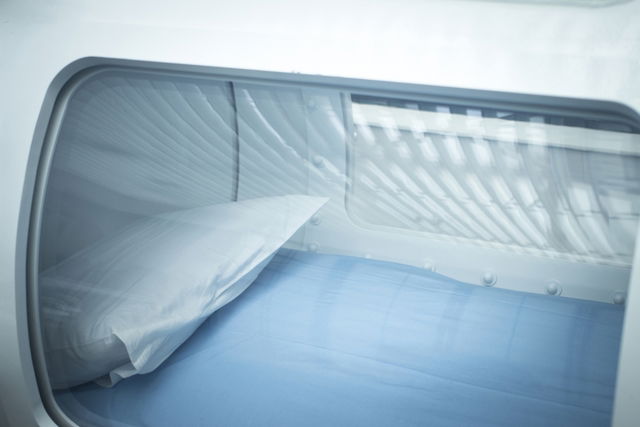Hyperbaric oxygen therapy is a treatment that promotes inhaling high concentrations of oxygen in an environment with a high atmospheric pressure. This allows the body to absorb more oxygen through the lungs, which boosts blood circulation. This therapy helps to stimulate the growth of healthy cells and prevents the development of bacteria.
There are two types of hyperbaric chamber, one that is for individual use and one that is for use of many people at one. These chambers are found in private clinics and can be used to treat various conditions, like diabetic ulcers.
It is important to note that this treatment is not scientifically supported as there are not enough studies that show that it can cure conditions like diabetes, cancer or autism. Nonetheless, doctors can offer this treatment if other, more traditional therapies are not effective.

What it’s for
Tissues in the body require oxygen to function correctly. When tissue become injured, even more oxygen is needed for cellular repair. Hyperbaric oxygen therapy can provide patients with more oxygen for conditions in which the body needs to recover. It can speed up healing and prevent infection.
Hyperbaric chambers can be used to treat many conditions like:
- Wounds that do not heal, like diabetic ulcers
- Severe anemia
- Pulmonary embolism
- Burns
- Carbon monoxide poisoning
- Brain abscess
- Radiation wounds
- Gangrene
This type of treatment is prescribed by the doctor with other medication. It is important not to discard conventional medical treatment when managing any of these condition. The duration of treatment within the chamber depends on the severity of the wounds or the illness, but the doctor can recommend up to 30 sessions.
How it works
Hyperbaric oxygen therapy can be prescribed by a doctor and can be completed in a hospital or clinic setting. Hospitals and clinics may have different types of hyperbaric chambers, and the oxygen can be administered through specific masks or helmets. Other chambers will provide oxygen that is inhaled normally.
To complete a session, patients should be lying down or sitting. They are then instructed to breathe deeply for about 2 hours. Doctors can recommend more than one session, depending on the condition being treated.
While receiving therapy, some people report feeling pressure within their ears, similar to being in an airplane. Therefore it is important to move your jaw to relieve this sensation. Patients should inform their doctor if they have claustrophobia, as long sessions can cause fatigue and anxiety.
It is important not take anything flammable with you inside the chamber, like lighters, electronics with batteries, deodorants or oil-based products.
Possible side effects
There are very few risks associated with using hyperbaric chambers.
In very rare cases, participating in hyperbaric oxygen therapy can cause seizures, due to the high concentrations of oxygen reaching the brain. Other possible side effects can include ear drum rupture, vision problems, or a pneumothorax.
You should advise your doctor if you start to feel uncomfortable during your session, as well as after.
Contraindications for use
Hyperbaric oxygen therapy is contraindicated in some cases, such as for people who recently has ear surgery, or for people with a cold or with a fever. People with lung disease, like asthma or COPD, should notify their doctor of their health history, as they are at greater risk for a pneumothorax.
It is also important to notify your doctor if you are on chronic medications, as they can impact your treatment. For example, chemotherapy medications can lead to complications if combined with hyperbaric oxygen therapy.
